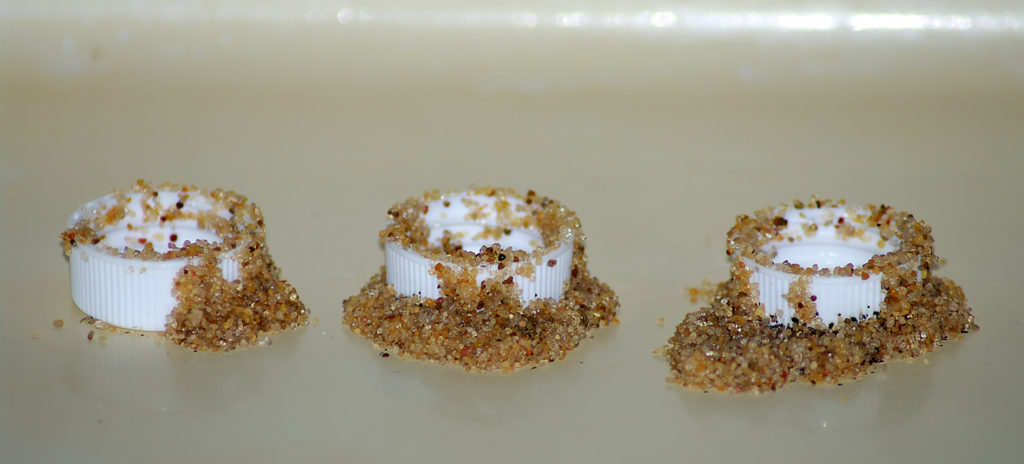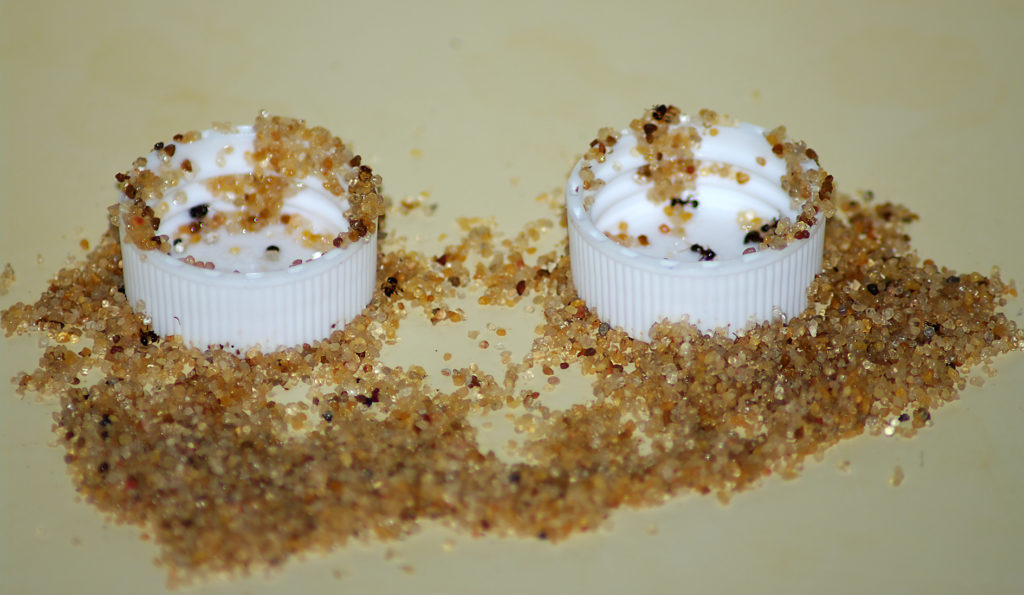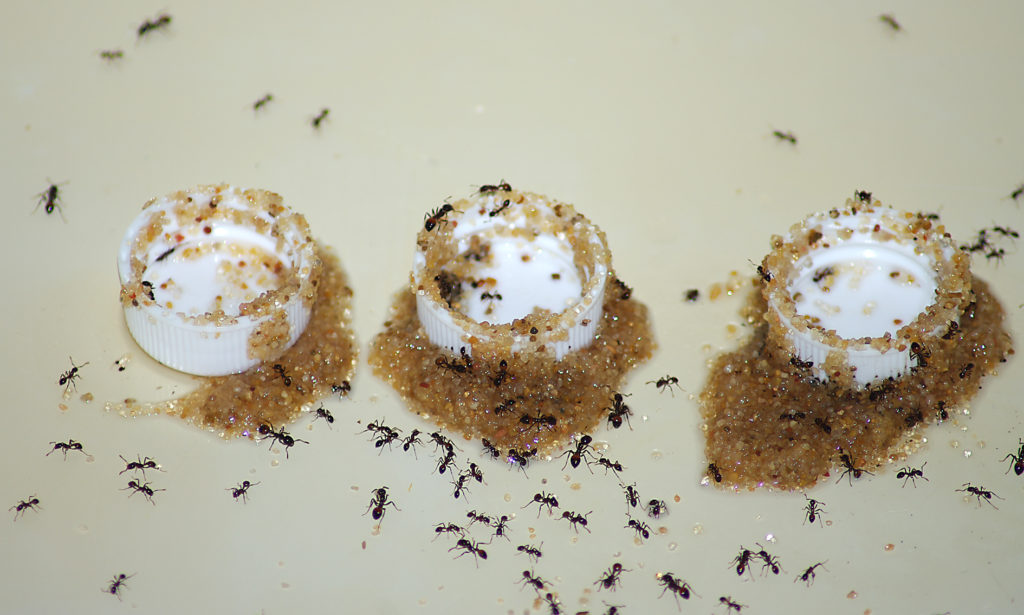Ants use tools for foraging in response to foraging risks
In the recent article “Ants adjust their tool use strategy in response to foraging risk” published in Functional Ecology, Aiming Zhou, Yuzhe Du, and Jian Chen revealed that the black imported fire ant Solenopsis richteri adjusts its strategy of using tools such as sand grains for foraging in response to various foraging risks. The authors performed assays with different drowning risks. Due to its hydrophobic cuticle, S. richteri can float on water surface to forage directly with the minimal risk of drowning. But with increasing drowning risk (due to reduced surface tension), ants used sand grains to build a structure that functions as a syphon. Here, Aiming Zhou shares some pictures of their research.
A Photoblog by Aiming Zhou
All pictures are © Aiming Zhou from Huazhong Agricultural University, China, and Jian Chen from USDA-ARS, MS, USA
Sand syphon structures including sand pile and sand path constructed by Solenopsis richteri.



Top view of sand syphon structures.

The structure quickly syphoned the sugar water with food dye out of the food container along the sand path.

Solenopsis richteri used sand grains to build a structure that could effectively syphoned the sugar water out of the food container. Instead of directly foraging inside the container, most of the ant workers were observed foraging around the sand syphon.

Most sand piles were very close to the food container (Video 1); sometimes, sand piles could be up to more than 11 cm away from the food container (Video 2); almost half of the sugar water solution was transported to the sand pile within 5 min (Video 3 and 4).





Recent Comments